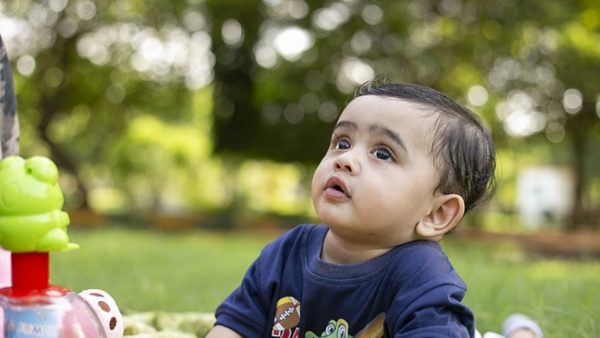
Teach your Toddler to talk
Babies can hear the voice soon after their birth. They start to learn the art of conversation looking at lips and by hearing voices. By the time the toddler, reach 2 years old, vocabulary should have evolved with the help of, especially from mother, father and grandparents.
Teaching a baby to talk is significant. A child learn to talk and communicate which helps child to express the feelings. Speaking naturally comes to babies and parents will be well on the way to develop an able communicator, who can express and interact with people in future. By two years, most babies have a large vocabulary and can put words together to express their needs and ideas. Sometimes parents worry about their child unable talk at proper age. Watch and observe carefully – if you think it is a problem contact your pediatrician for a speech therapy.
Here are few tips for parents to teach their child how to talk.
1) Talk to your toddler as much as you can. Look at her face carefully and respond when toddler tries to talk or smile.
2) If the child tries to say something or try to show something focus on understanding what child tries to say. Don’t focus on how clear the pronunciation is.
3) When the toddler communicates successfully give an encouraging smile and respond positively.
4) While bathing your child or feeding talk about what you are doing with small communications. Say this is soap, shoes, hair, arm, teeth and name the food that you are feeding the child. Tell child, it is lunch time now or supper time. While feeding say the words like spoon, rice, apple, yogurt etc.
5) To get your toddler’s attention call by name before you talk and talk to your child with a smile on your face. Do not get angry or scare your child.
6) Ask a question and encourage child to answer. Give few seconds to answer, during that pause time toddler will observe, think and recognize.
7) Show children books, animals and objects that are for daily use. Look at books with your toddler often. Even if you do not read the story as it happens, child will learn by listening to you talking about the pictures. Child will remember this and will get introduced to more words to speak.
8) If your toddler says “nana” when she wants a banana, you could say “Yes, here is a banana.”
9) Do not expose child to high volume of radio, TV noises. This will disturb their focus. TV does not interact with child. It is you who will. TV is only to show some concept. Language and communication are – by definition – interactive.
10) Play with toddler on the floor. Allow toddler to pick up the toy and play with her. Make it a fun event and enjoy talking to your child. Include the favorite toy in everyday activities like eating, sleeping etc.
11) Sing nursery rhymes with actions. This helps child to understand objects. Sing rhymes like “twinkle twinkle” or “row, row, row your boat”. The more you make it fun, toddler will giggle and join you while singing.
12) Ask toddler to repeat animal sounds. Get those animal toys that make sound.
13) If you have pets, show the pets to child and ask what it is or where it is? Questions like, where is the doggie grabs attention and child will answer.
14) When the child starts walking or around with you in kitchen or during laundry talk to child and give small job like give me socks, give me spoon etc.
15) Encourage your child to talk to friends and family. Tell child to talk about new toy or something like flower, dog, cat etc.
All these activities helps child to talk and pronounce properly. If you feel that, your child needs help to talk contact a pediatrician and seek advice. Some children will take time to talk. If they already have siblings, it becomes easy as they follow the children easily. If there is only one child then it becomes parent’s responsibility to keep the child active, engaged and expose to the words so that they can learn talking at proper age.
References:
http://www.newkidscenter.com/
http://mommyspeechtherapy.com/
http://www.mommyshorts.com/
Image credit: Image by Nirav Jani from Pixabay (Free for commercial use)
Author: Sumana Rao | Posted on: February 15, 2018
« Ear infection in children, why? Test your knowledge about kid’s health »






















Write a comment